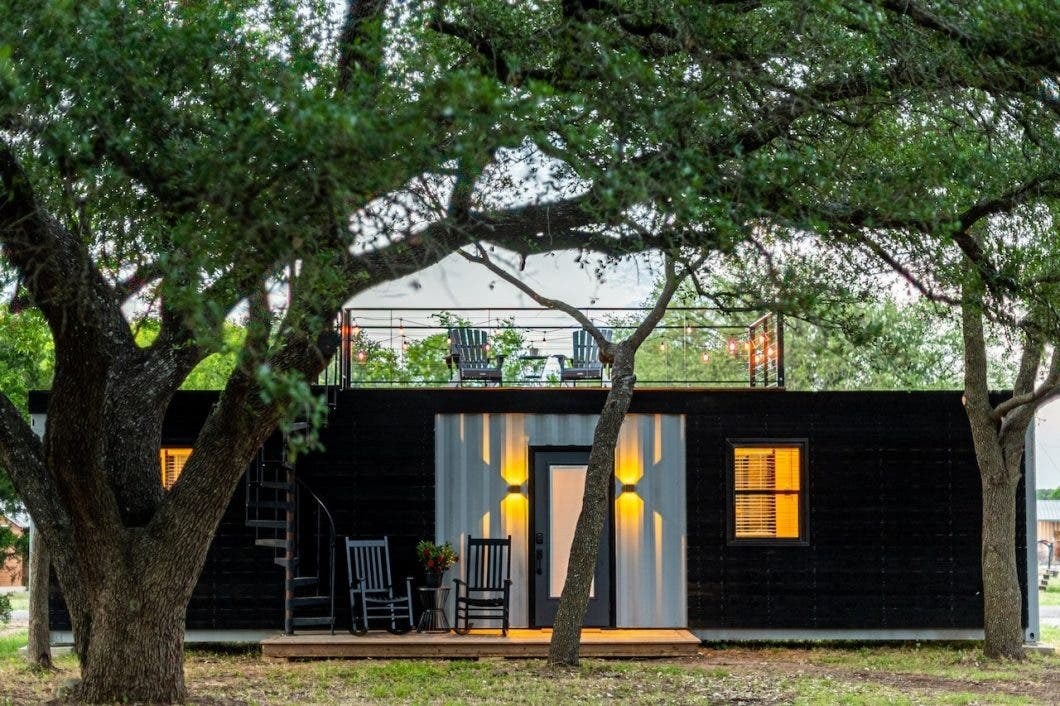Homeownership comes with a lot of financial responsibility, no matter where you live. Because of this burden, many people turn to tiny homes to improve their financial situation. While the average cost of a home in the U.S. is just under $400,000, most tiny houses cost anywhere from $30,000-$60,000.
While the listing price may be “cheap,” there are things to keep in mind now and for the future, if you ever wanted to sell.
So, if you’re interested in purchasing a tiny home for yourself or your small family, keep some of these considerations in mind before you sign on the dotted line. Knowing exactly what to expect can give you peace of mind and will be easier on your bank account.
Consider Your Needs
There are many benefits to owning a home. It offers a sense of financial independence, which is still a major part of the American dream. Unfortunately, many people aren’t able to experience it because of things like:
- Student loans
- Poor economy
- Weak job market
These problems have led to 34% of people believing they won’t be financially independent by the time they reach 30 years old.
For some, buying a tiny house is a way to achieve that independence without destroying their finances. But, it’s important to consider your needs before you make any type of real estate deal. There are often some unforeseen costs in buying a tiny house that you shouldn’t overlook, including:
- Zoning laws
- Utilities
- Storage
- Home insurance
You should also consider where the property is. How far will you have to travel for work or to buy basic necessities? Do you plan on living alone for the next few years, or do you want to grow your family?
This isn’t meant to deter you from buying a tiny house. However, everyone should know what they’re getting into when purchasing a property.
Saving Money With Tiny Living
One of the best things you can do before purchasing a tiny house property is to consider how and where you can save money. Obviously, your mortgage won’t be as high as it would in a traditional home, but that’s just the start.
It’s time to build a budget.
Take a look at what you’re spending now and what you can afford. Then, consider areas where you can see financial improvement by living in a tiny home. You’ll naturally save money on:
- Heating/cooling
- Maintenance costs
- Water
- Electricity
Many people in tiny homes also tend to live more minimalistic and “off the grid” lifestyles. While you don’t have to go that route, it’s a great way to keep yourself from spending too much money on excessive purchases.
Because most tiny houses tend to be in rural areas, you can stretch your savings even further by growing your own food or installing solar panels to lower your utility bills. Tiny home living allows you to get creative with the ways you save money. If you’re willing to think outside the box, you can continue to feel confident about your financial decisions after buying the property.
Resale Value
No matter how much you love your tiny home, moving may be an eventual decision you’ll have to consider. Maybe your family will get bigger. Maybe you got a new job. Or, maybe you just want to be closer to your family or loved ones. Whatever the case, resale value is something you need to consider before you buy a house.
Getting a “fixer-upper” can be great if you’re on a budget when you’re buying. But, it’s important to commit to the fixing if you ever want to sell. Some of the best home improvement projects that can boost your home’s value include:
- Remodeling the kitchen area
- Making the place seem more spacious
- Improving energy efficiency
- Enhancing curb appeal
- Making necessary upgrades to keep maintenance low
The good news about these projects is that you can keep your costs relatively low as you work on them. Upgrading and renovating a tiny home is cheaper thanks to fewer materials needed.
Even small upgrades can make a big difference. Change out the appliances. Put a fresh coat of paint on the inside. Replace your current kitchen cabinet handles with new ones. Small touches mean a lot, especially when home design trends change so frequently.
When you finally decide to sell your tiny house, the improvements you make will allow you to increase your listing price, so you’ll end up with a nice profit you can use on your next property.
If you’re in the market for a tiny house or considering building your own, there are plenty of ways to keep costs low and allow you to achieve financial independence. However, keep your finances in mind from start to finish so you always feel confident in your budget. By making smart financial choices regarding your tiny home, you’ll feel more comfortable, less stressed, and more willing to enjoy all of the perks of the lifestyle.
Image Source: Unsplash
